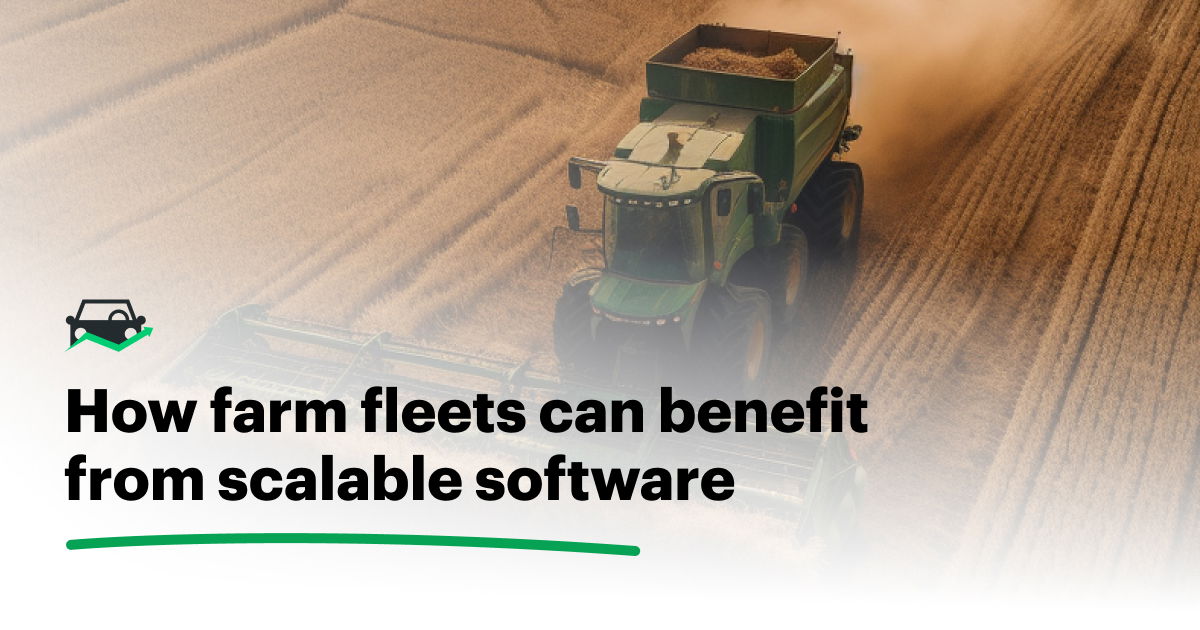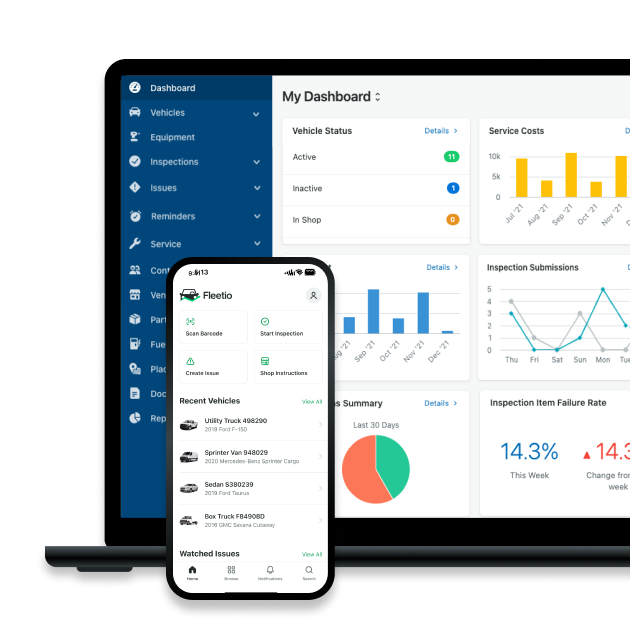Benefits of Scalable Software for Farm Fleets
Apr 12, 2023
5 min read
With talk of food shortages getting worse in the coming months, local, regional, and national farmers are under pressure to provide. Maintaining a safe and productive fleet year round with limited downtime can help farmers ensure deliverability and allow them to focus on more important matters.

Farm Fleets Face Increasing Obstacles
Farming and agricultural fleets worldwide are facing more and more obstacles. The effects of inflation on fleets are numerous and continue to place a burden on farms from small to large. The increased prices of both new and used vehicles and equipment, replacement part price hikes and the cost of fertilizer reportedly 80-100 percent higher than in 2020 — even after a 35-50 percent price drop from May 2022 — are causing a major strain on farm fleet productivity and profitability.
While fertilizer prices may not seem directly connected to the fleet side of farming, trying to combat or adapt to these price increases can lead to funds reallocation from fleet to production. "Farmers around the world are grappling with a doubling and even tripling of prices for inputs, especially chemical fertilisers," according to Resilience. "This is compounded by rising interest rates on the credit farmers typically borrow to purchase inputs, as well as by the high costs of fuel – another major input for farmers. Many farmers have little choice but to cut back on inputs and this means harvests will decline."
Additionally, climate challenges are endangering farmers’ ability to meet demand. Just last year, 2,000 cattle in Kansas died due to a record-breaking heatwave. "Heatwaves in the US have steadily gone up by frequency, duration and intensity in four decades since the 1960s," The Guardian reports. "The annual number of heatwaves rose from two in the 1960s to six in 2010s. Heatwave seasons now accumulate more days than in past decades: whereas in the 1960s the heatwave season would last about 20 days, by the 2010s it reached 70 days on average." These prolonged, intense heatwaves don’t just affect livestock, though; they can wreak havoc on crops, field workers and drivers, impacting all aspects of the operation.
On top of all that, price speculation caused by the economic upheaval of the COVID-19 pandemic and war in Ukraine — and associated supply chain issues and shortages — along with a rash of fires at food processing plants, increased disease in livestock, and even barn fires (which killed more than half a million farm animals in 2022) are all factors in rising cries of food shortages, causing price gouging and spurring many consumers to buy what they can in bulk. In short, farm fleets have a lot to contend with — both direct and indirect.
Proper Maintenance can Ease Inflation Woes
Maintenance is one of — if not the — largest ongoing expense for fleets, so ensuring assets are properly maintained can help fleets substantially cut expenses. Due to the dynamic nature of farming, farm fleets’ maintenance needs change throughout the course of the year. While vehicle and farm equipment usage typically peaks during harvest time, the slower season(s) can see a lot of equipment spend long stretches out of use. This can cause harmful inconsistencies with preventive maintenance (PM) schedules for both active and non-active pieces of fleet, as well as increased wear and tear on assets used year-round due to overutilization.
Operations running farm and fleet can make use of historical service and asset inspection data, PM compliance rates and usage data to assess where a majority of the fleet’s expenses lie and why. Common reasons for inflated spend include poor PM compliance and improper PM schedules. Cherrylake used such data to better understand the cost of reactive maintenance and was able to take corrective steps to increase PM work from 30 to 60 percent, drastically reducing breakdowns and decreasing its previous $500,000 repair spend to about $350,000. Farm fleets can customize maintenance checklists to improve maintenance management and avoid extra costs incurred from being reactive instead of proactive.
Additionally, farmers can cross-reference production trends with fleet data to see whether increased fleet expenses coincide with their busier seasons. If this isn’t the case, chances are PM schedules for active fleet pieces are not in tune with assets’ needs and/or off-season equipment isn’t properly maintained while out of use. The latter can cause increased breakdowns when equipment is ready to be used.
Learn how Fleetio scales with the needs of your fleet
Request personal demoFlexibility of Scalable Software
While reallocating funds from fleet to production isn’t necessarily conducive to running a successful operation, optimizing fleet budgets for accuracy and reducing unnecessary fleet spend can play a significant role in adding financial flexibility without putting the fleet in a bind. Farm equipment maintenance software and equipment inventory software — or fleet management software (FMS) with equipment maintenance and inventory management features — can help farm fleets better manage maintenance across the fleet while providing a scalable solution for overall fleet management.
Scalable FMS allows farm fleets to actively track and manage assets when they’re in use and archive assets that have been put away for the season. Archiving out-of-use assets keeps all associated data clean and viable while ensuring that you’re not paying to track assets going unused. This allows farm fleets to reduce costs during the slow season. Scalable FMS is also more adept at seamlessly growing with your fleet. Plus, inventory management features in FMS, such as valuation and automated reorder thresholds, help farm fleets optimize inventory stocking and reporting for deeper insights into parts cost, quality and reliability.
One of the biggest advantages of FMS is the reporting capabilities. Scalable FMS automatically collects, consolidates and aggregates fleet data — including data from integrated technologies such as telematics, GPS, fuel card, third-party service providers and even finance solutions — for real-time reporting, easy analysis and budget optimization.
Find out how Fleetio can help your farm fleet navigate common challenges in the industry and better prepare for future obstacles. Start your free trial or schedule a personalized walkthrough today!

Senior Fleet Content Specialist
As a Senior Fleet Content Specialist at Fleetio, Rachael Plant uses her near decade of industry experience to craft practical content aimed at helping fleet professionals tackle everyday challenges with confidence.
LinkedIn|View articles by Rachael PlantReady to get started?
Join thousands of satisfied customers using Fleetio
Questions? Call us at 1-800-975-5304
